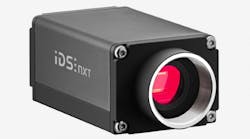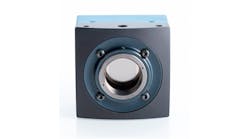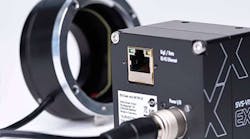by Andy Wilson
editor
[email protected]
The absence of the Chinese on the global scene is striking, and it’s likely that they will enter the market on the component level.
Last year, you may have attended one or more of the numerous trade shows now devoted to machine vision and image processing. If you did, one thing was clear: of all the exhibitors that showed products, fewer than 1% of the companies were from China. With the barrier to entry into the vision market so low, it seems strange that such a small percentage of Chinese manufacturers offer OEM lighting, cameras, frame grabbers, software, or automation components.
I brought this fact to the attention of one marketing manager at last year’s Assembly Tech Expo. Over dinner, he recounted past experiences in selling lasers to a company based in California.
After receiving the first laser, personnel from this company ordered several more over an 18-month period. My companion admitted he didn’t ask why the California company wanted the lasers-he was only too pleased to receive repeat orders. But later it emerged that the company, funded by US venture capitalists in the telecom-boom years, was staffed mainly by a number of Chinese Ph.D.s, all of whom held H1B work visas. The company was building automated systems for aligning and welding precision photonic devices.
After the telecom bubble burst, the company ceased operations, only to emerge in a similar guise in mainland China. With labor rates much lower than in the USA, the company cornered the market in its particular field, all thanks to American venture capital and the US government’s highly contested H1B technical visa program.
Could this nightmare scenario repeat itself in the machine-vision market? In an attempt to find out, I consulted Asian Sources (www.asia.globalsources.com), a Web site designed to promote Asian products worldwide. I looked for the products that were to be seen at the trade shows I have visited. Certainly, there were cameras and PC-based digitizing boards and even some products that could have been marketed at some North American, European, or Japanese trade shows. All of these products, however, seemed to be targeted at the consumer or security markets, where broadcast-compatible video is the standard.
Several reasons exist for the lack of commercially available machine-vision products from China. First, and perhaps most important, is the size of the market. In 2003, the AIA reported total sales of components to North America of $1.6 billion in 2003. When you compare this with the estimated US cable and satellite-equipment market, which four years ago was estimated at $71.7 billion, the market for machine-vision products is rather small.
Then there are standards, or rather the many varieties of them. Camera Link, Gigabit Ethernet, NTSC, USB, PAL, SECAM, and RGB formats are just a few ways imaging data can be transferred from cameras to host computers. With such a variety of standards, sensors, lighting equipment, and other peripherals, many North American, European, and Japanese companies produce niche subsystems targeted at specific markets. Products such as fiber-Camera Link extenders, for example, designed to eliminate the 10-m barrier of camera-to-frame-grabber cable lengths, now offer systems integrators a way to connect cameras to computers over long distances in harsh environments.
These product varieties have led to systems that are more complex. Despite the efforts of standards committees, attaching digital cameras to frame grabbers is still a long way from being a plug-and play process. Engineering expertise is required.
Weighing these factors, it is apparent that there are no “killer” machine-vision products shipped from any single manufacturer. This is why the machine-vision market remains relatively small and segmented.
Many companies in China, however, are set up to produce end-user products in volume. No engineering expertise is required. Realizing this, it is likely that they will first enter the machine-vision market on a component level. In this way, the Chinese companies can maintain volume production while allowing Western and Japanese suppliers to reduce subsystem costs.



